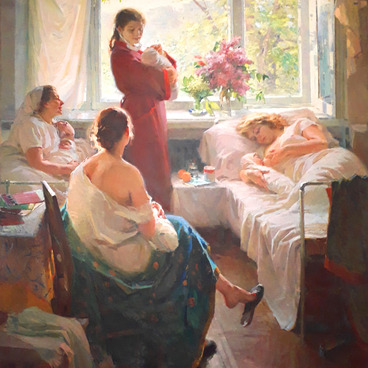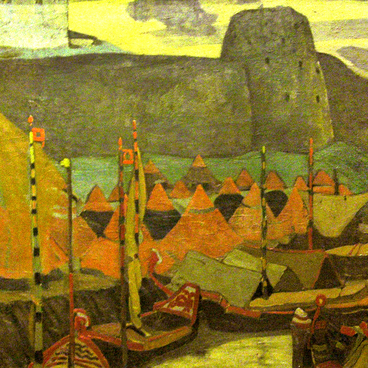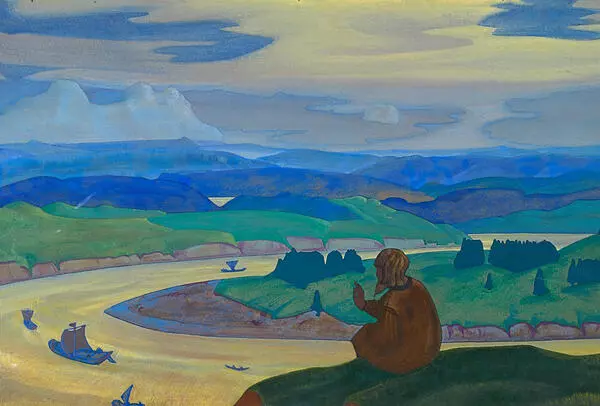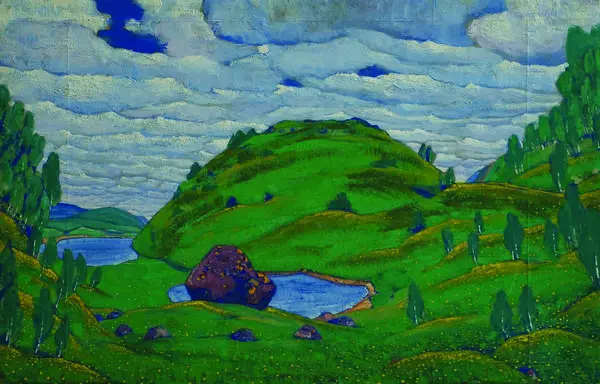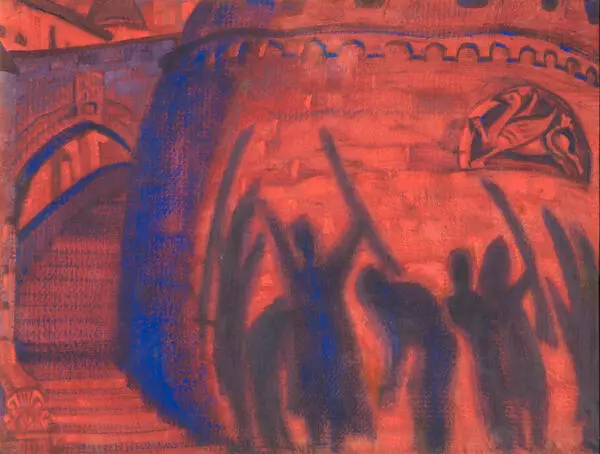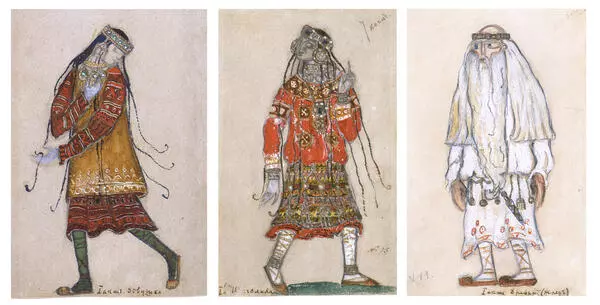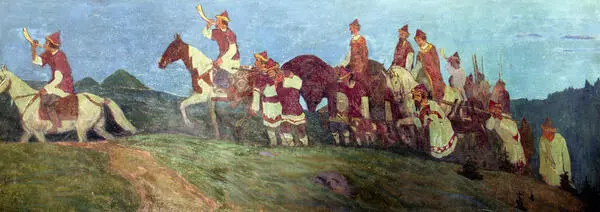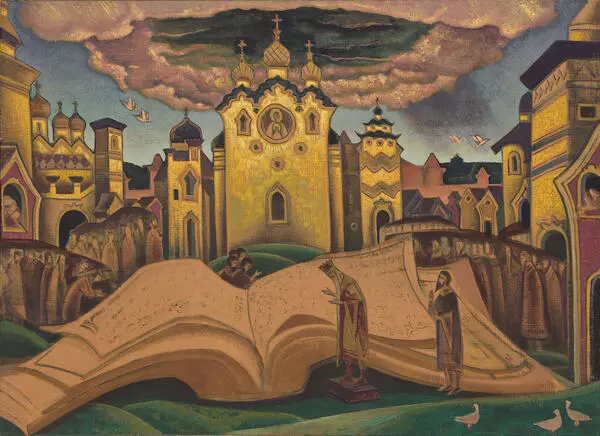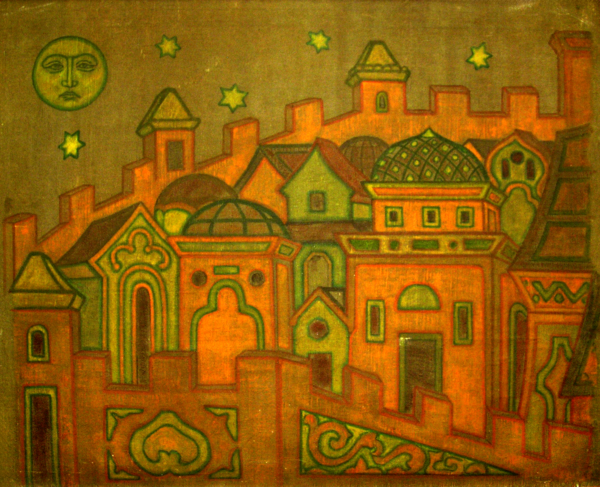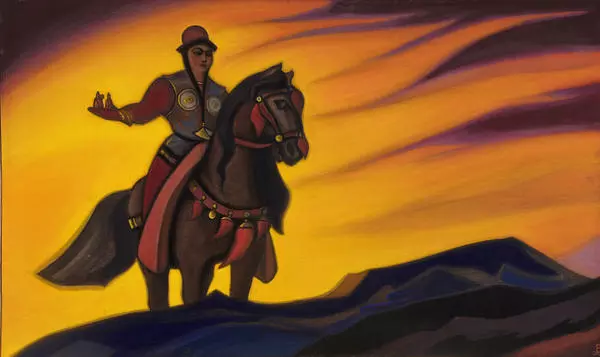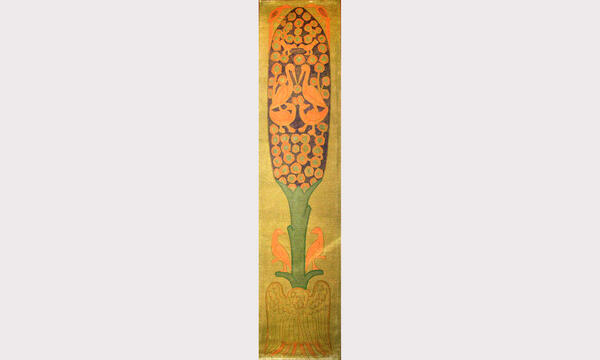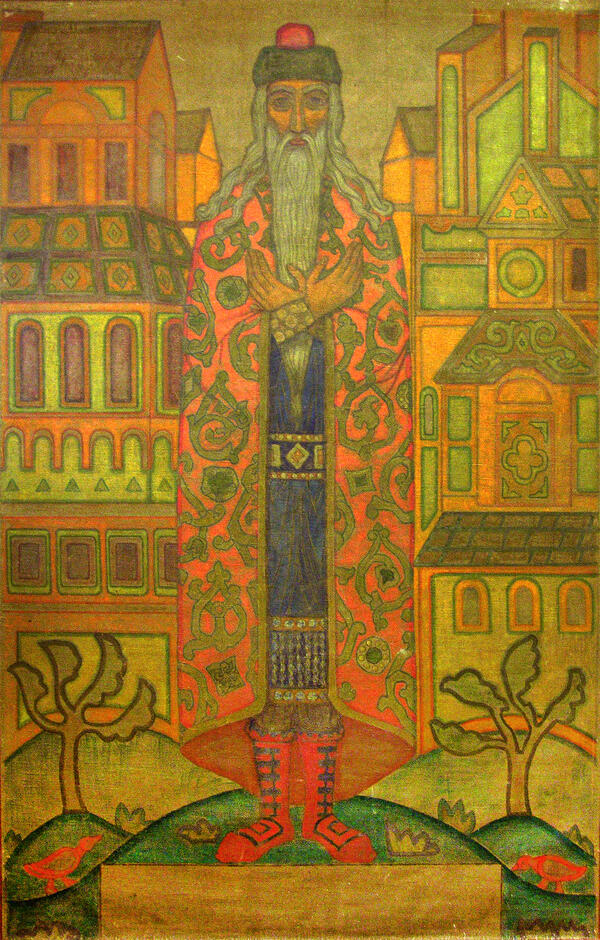The Russian fine art specialist and art critic Sergei Rostislavovich Ernst
(1894–1980), a contemporary of Nicholas Konstantinovich Roerich, called this
study one of Roerich’s capital works. He wrote,
Good Visitors. Study of the chapel mural
Created in 1914 is a new large work by Roerich of the ecclesiastical character — twelve panels for the chapel of Livshits’ villa. <…> The whole subject of the painting is also very indicative of Roerich — only he could project such a form on the decor of the showroom intended for rest from everyday affairs and elevation to other realms.
The studies for the design of the chapel reflected the main idea of both Roerich’s artistic and philosophical heritage — the improvement of the world through human self-improvement. The figures of people depicted by Nicholas Konstantinovich Roerich on the panel “Good Visitors” embody patience, sacrifice, and Christian charity.
The artist executed majestic and calm figures of the saints — presumably, the baptist of Russia, Prince Vladimir Svyatoslavovich, and Princess Olga, one of the first Russian Christian rulers. Between them, Roerich placed the “Tree of Life” with fabulous birds.
The panel “Good Visitors” has a pair. Compositionally, both panels are built on the same principle. The “Good Visitors” bear ancient Russian and Byzantine characteristics. Presumably, on the second panel of the same name, Roerich depicted the Byzantine Emperor Constantine and his mother Elena, reflecting the fact that Christianity came to the Russian land from Byzantium.
There are no names in the titles of the canvases. The artist decided not to specify the characters in his works and not to limit the images he created. Nikolas Konstantinovich placed the characters in a golden-olive space. He covered their clothes with a complex decorative pattern, harmonious with the background of the panel.

